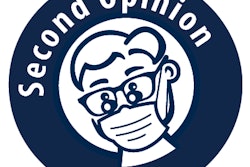
The use of 38% silver diamine fluoride (SDF) as a topical treatment for cavities in pediatric patients has been conditionally recommended by the American Academy of Pediatric Dentistry (AAPD) in the first evidence-based guideline on the use of SDF in these patients.
 James Nickman, DDS, president of the AAPD.
James Nickman, DDS, president of the AAPD.The AAPD convened a workgroup to develop treatment guidance and an evidence-based recommendation regarding the application of SDF in pediatric patients, including those with special needs. The guidelines were issued October 11.
"After taking into consideration the low cost of the treatment and the disease burden of caries, panel members were confident that the benefits of SDF application in the target populations outweigh its possible undesirable effects," the authors wrote. The workgroup noted, however, that this was a conditional recommendation based on low-quality evidence.
In an email interview with DrBicuspid.com, AAPD President James Nickman, DDS, said that SDF could provide additional treatment options.
"While not appropriate for all cavities, SDF may provide a treatment option for children who may not otherwise receive care, for example, a young child who is unable to tolerate traditional restorations in an office-based setting," he said.
Limited literature
More than 40% of young children in the U.S. have caries and more than 20% of children have untreated decay, so finding a cost-effective treatment for caries in this population is crucial. Silver diamine fluoride has been identified as an inexpensive topical treatment that successfully arrests dental decay. In 2014, the U.S. Food and Drug Administration (FDA) classified SDF as a fluoride.
The workgroup conducted a literature search, initially identifying 145 studies on SDF. Search terms such as "randomized controlled trials" and "meta-analysis" reduced the number of studies by almost 90%.
"This guideline is limited by the small number of [randomized controlled trials] evaluating SDF, the heterogeneity of the included trials, and selection bias that may have been introduced by possibly poor sequence generation and selective reporting by one study," the workgroup wrote.
 Lead author Yasmi Crystal, DMD.
Lead author Yasmi Crystal, DMD.In fact, the recommendation is mostly based on evidence from a systematic review in JDR Clinical & Translational Research (August 15, 2016), according to the authors.
"Weaknesses of this guideline are inherent to the limitations found in the systematic review upon which this guideline is based," the group noted.
The workgroup wrote that based on its pooled estimates, about 68% of cavitated caries lesions in primary teeth would be expected to be arrested two years after SDF application (with once or twice a year application).
Silver diamine fluoride had a 48% higher success rate in caries lesion arrest compared with control patients in the study with the longest follow-up (30 months). In that study, approximately 250 more cavitated caries lesions per 1,000 surfaces would be expected to be arrested by treatment with SDF versus control treatments.
The workgroup concluded that the benefits of SDF application (relatively high success rate and low cost, compared with other cavity treatments) outweighed the possible undesirable effects and lack of randomized controlled trials.
Yasmi Crystal, DMD, a pediatric dentist in New Jersey and lead author of the guidelines, said in an email interview with DrBicuspid.com that the workgroup considered conducting a new systematic review but decided against it.
"The decision to develop a guideline on SDF, and to use the [JDR] review as the basis for it, was thoroughly discussed" by the AAPD committee, Dr. Crystal said. "Due to the limited number of good clinical trials on SDF, it was decided that conducting a new systematic review would not result in conclusions much different from in the [previous] systematic review."
She noted that the workgroup included an experienced statistical consultant and that it re-evaluated and reanalyzed the data.
Changing daily practice
Dr. Nickman said he hoped that this conditional recommendation would help improve the quality of the literature on SDF going forward.
“Aside from fluoridated water, silver diamine fluoride may be the single greatest innovation in pediatric dental health in the last century.”
"The systematic review that the [evidence-based guideline] workgroup cited was the best evidence at this point in time and was recognized by the group as providing a conditional recommendation," he said. "I would expect that the recommendation provided by our guideline will strengthen as the body of quality publications increases."
The use of SDF could help address healthcare disparities in children, he added.
"Aside from fluoridated water, silver diamine fluoride may be the single greatest innovation in pediatric dental health in the last century," Dr. Nickman said. "Given its minimal cost and easy, painless application, it could help close the gap in healthcare disparities."
Dr. Crystal noted that the goal of the workgroup was to help general and pediatric dentists better understand treatment with SDF.
"We want all dentists to learn about this new alternative therapy to treat those children who, for whatever reason, cannot be readily treated with traditional restorative methods," she said. "We want them to know the strengths and limitations of this therapy, so they can effectively evaluate who is a good candidate."
Dr. Crystal also cautioned, though, that SDF is not 100% effective.
"Particularly, we want [dentists] to be aware that as it does not work 100% of the time, the SDF workgroup recommended close follow-up and for dentists to consider SDF as one part of a comprehensive caries management plan."



















